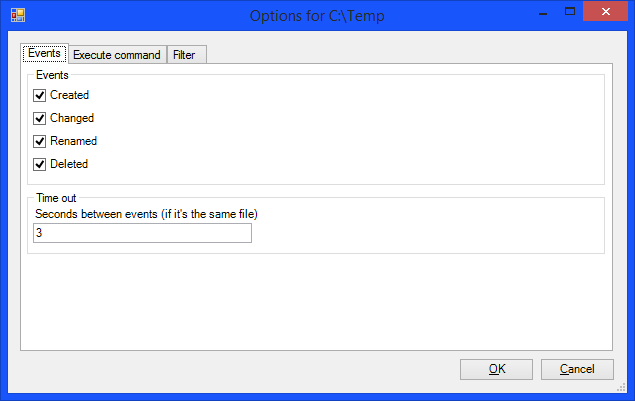
- #MONITOR FOLDER FOR NEW FILES HOW TO#
- #MONITOR FOLDER FOR NEW FILES INSTALL#
- #MONITOR FOLDER FOR NEW FILES WINDOWS#
#MONITOR FOLDER FOR NEW FILES WINDOWS#
Creating a temporary event consumer with Windows PowerShell 2.0 is really easy, so it only makes sense to take this first step. In fact, whenever I am creating a permanent WMI event consumer, I always test it out as a temporary event consumer first. Then I will use this WQL event query tomorrow to create a permanent WMI event consumer. Today I am going to develop a WMI event query to detect newly created files in a particular folder. Note For more information about WMI event driven scripts, see An Insider’s Guide to Using WMI Events and PowerShell. Then if the files match the naming pattern discovered yesterday, rename them by using the procedure from the script I posted yesterday in Use PowerShell to Detect and Fix Files with Leading Spaces. Although running a script on demand to find and rename files in a folder might work, it would be better to use an event to monitor the folder for newly created files. Yesterday’s email from KS about his problems with files that contain leading spaces in them got me thinking. Microsoft Scripting Guy, Ed Wilson, is here.
#MONITOR FOLDER FOR NEW FILES HOW TO#
Albeit with a much worse interface.Summary: Microsoft Scripting Guy, Ed Wilson, shows how to use Windows PowerShell to monitor for the creation of new files.

See the inotifywait answer for a better, and more powerful method of doing this. Note this isn't a failsafe mechanism because the inode could be recycled to a different file name entirely. It's after there is an operation on an inode it hasn't seen. Control of the TTY is not transferred the child process. entr waits for the utility to exit to ensure that resources such as sockets have been closed. A process group is created to prevent shell scripts from masking signals. SIGTERM is used to terminate the utility before it is restarted. As with the standard mode of operation, a utility which terminates is not executed again until a file system or keyboard event is processed. In this mode entr does not attempt to read from the TTY or change its properties. Files with names beginning with ‘.’ are ignored. This option also enables directories to be specified explicitly.
#MONITOR FOLDER FOR NEW FILES INSTALL#
You can install it with apt-get install entr

entr was written to make rapid feedback and automated testing natural and completely ordinary. Uses kqueue(2) or inotify(7) to avoid polling. Note entr doesn't use polling giving it a huge advantage over many of the alternatives.

Using entr is the new way to do this (it's cross platform). var/www/html IN_CREATE /root/scripts/backup.sh Essentially it's a service that leverages inotify and you can setup configurations to take action based on file change operations. I prefer incron, as its easier to manage. It's not bullet proof, but it serves some purposes without external tools like inotify. You could also background the activities. If your file processing doesn't take too long, you should not miss any new file. I just cooked up this, and see no huge problems with it, other than a tiny chance of missing files in between checks. Not real time, so if a file was created and deleted in less than 0.1 second, then this would not work, watch only supports minimum of 0.1 seconds. Non-scriptable (For scripting options, have a look at other answers) Monitors your folder and lists you everything in it every 0.1 seconds In case you came here for a simple, fast, handy solution reading the title, you could use watch watch -n 0.1 ls There is no need to use grep/sed/awk to preprocess the output. Also, your read command can assign the positional output into multiple variables that you can choose to use or ignore. What is important to note is that the -e option to inotifywait is the best way to do event filtering. As of version 3.13 (current in Ubuntu 12.04) inotifywait will include the filename without the -f option.

In Ubuntu inotifywait is provided by the inotify-tools package. You should consider using inotifywait, as an example: inotifywait -m /path -e create -e moved_to |Įcho "The file '$file' appeared in directory '$dir' via '$action'"


 0 kommentar(er)
0 kommentar(er)
